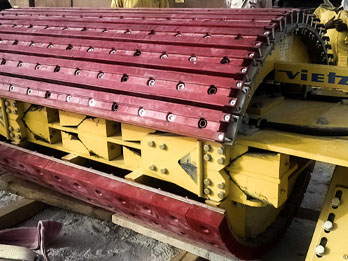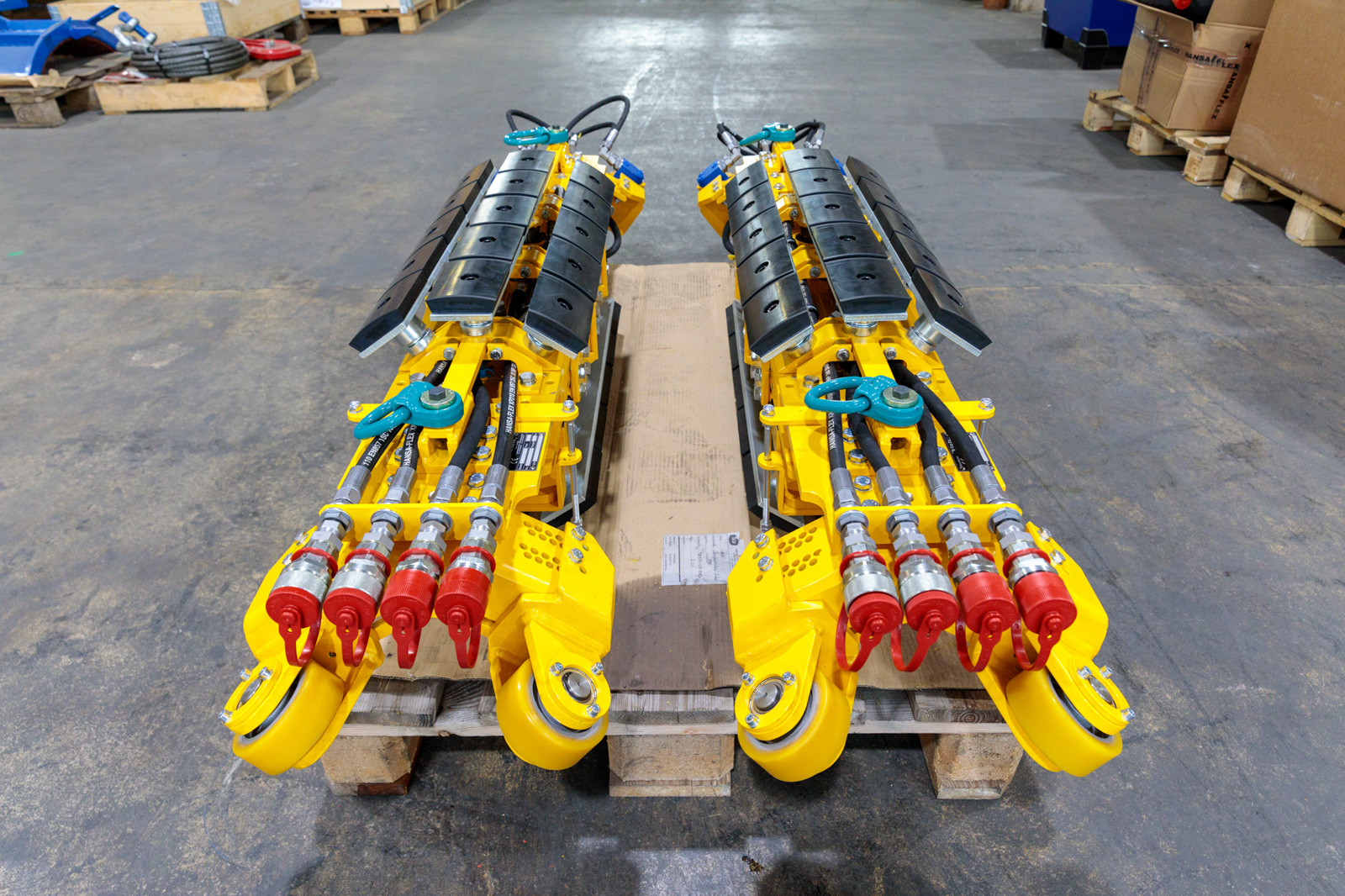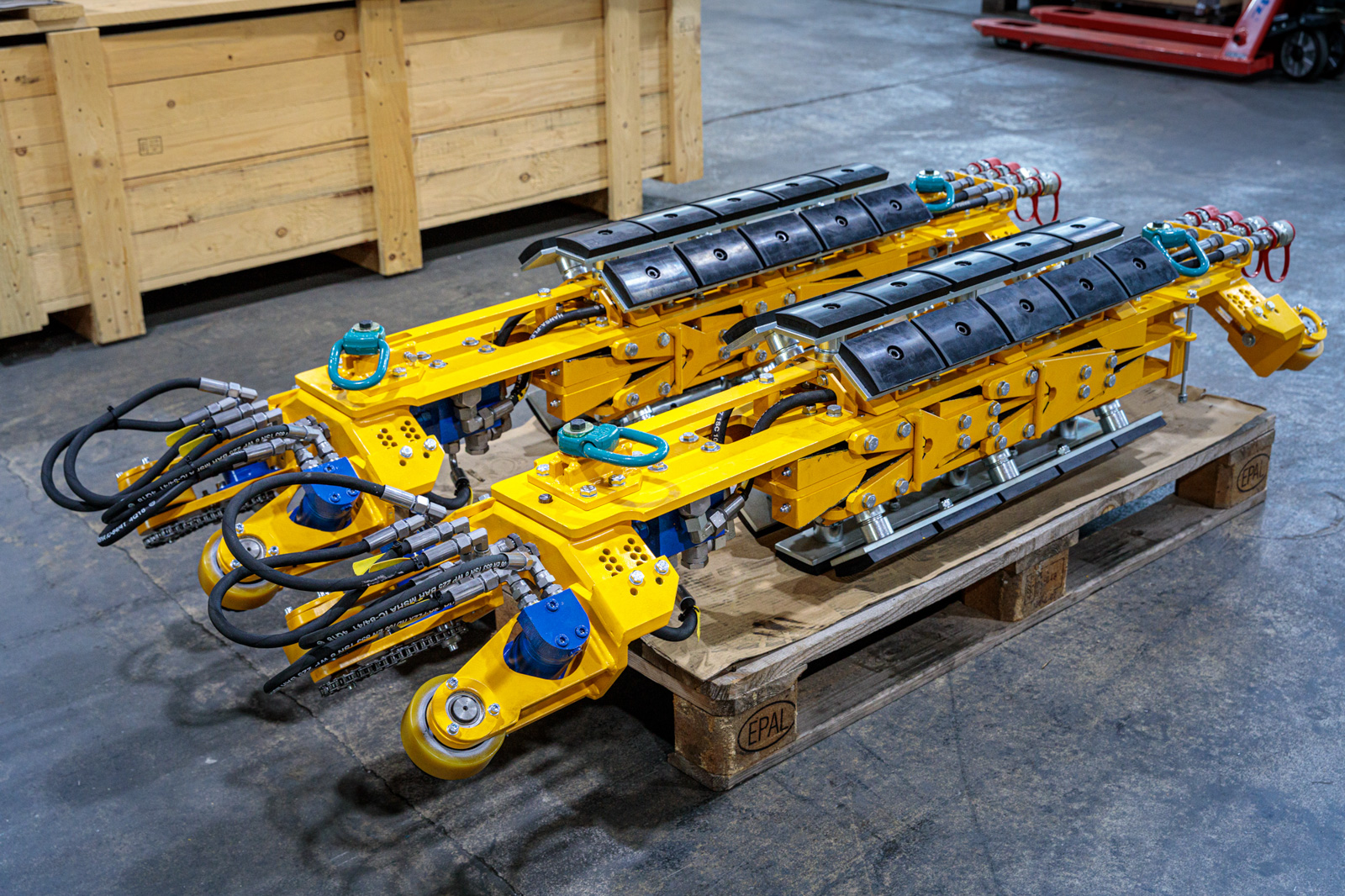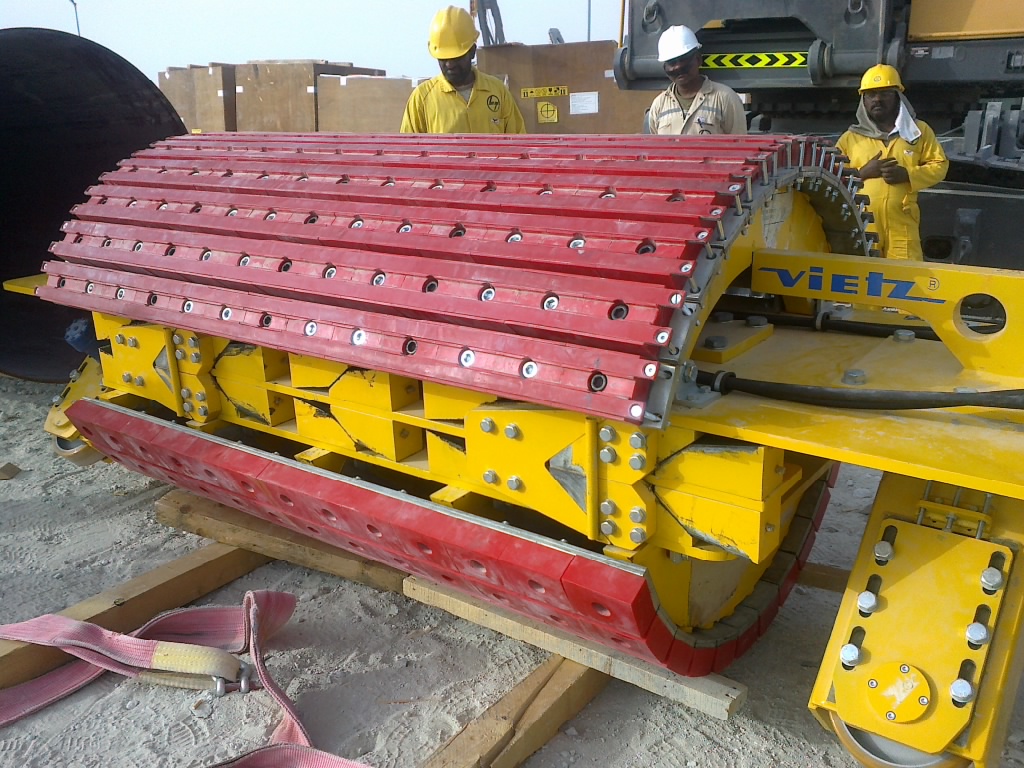Mandrels

A pipe bending machine exerts up to several hundred tons of pressure to cold-bend the pipe. Especially with thin-walled pipes, this can lead to unintentional deformation of the pipe in the area of the bend. The pipe becomes oval or dents form. Where this cannot be tolerated, for example to avoid fluid-mechanics issues, a mandrel is used.
The mandrel is placed at the location of the bend inside the pipe and hydraulically clamped. During bending, buffers support the pipe wall and assist in the bending process.
When not clamped, the mandrel rests on its rollers. Depending on the size of the mandrel, it can be moved in the pipe on these rollers via a linkage or a hydraulic drive.
Especially with spiral-welded pipes, this movement can cause the mandrel to twist in the pipe when passing over the weld seams. Vietz Mandrels from size 22″ are designed with pendulum suspended undercarriages, which allow the bending specialist to align the mandrel in a vertical position again under its own power without having to move it out of the pipe.
Vietz bending machines are equipped with quick couplings for the connection of a hydraulic mandrel. The operator of the bending machine controls its functions from the control panel. Our hydraulic mandrels are supplied with a set of connection hoses for the standard 12 m pipe length. Other hose lengths are available on request.
Vietz mandrels are suitable for up to two pipe sizes and can be adjusted for all wall thicknesses according to API5L.
Alternatively, we also supply pneumatic mandrels. These are connected with less effort via a single hose, but do not achieve the same forces as the hydraulic version. All bending machines from Vietz from size 6″ – 24″ on can be equipped with a suitable compressor.



